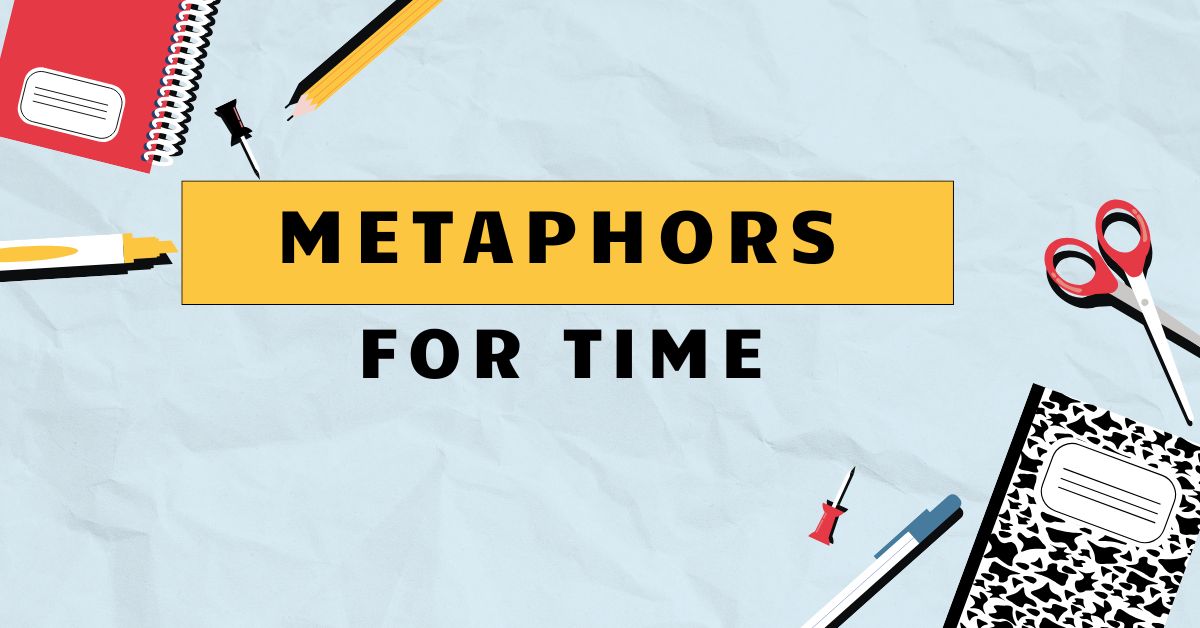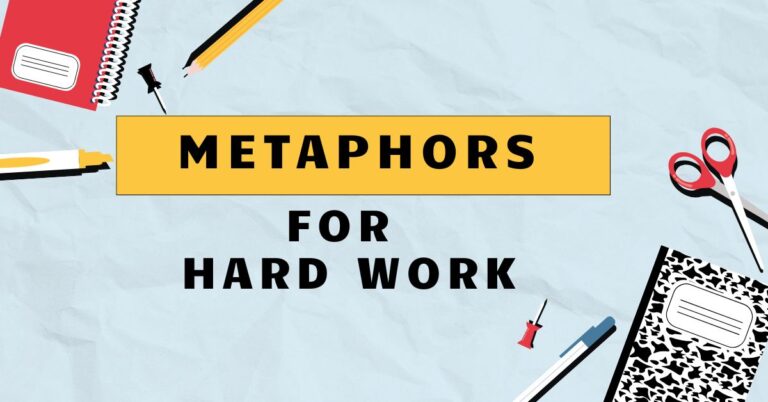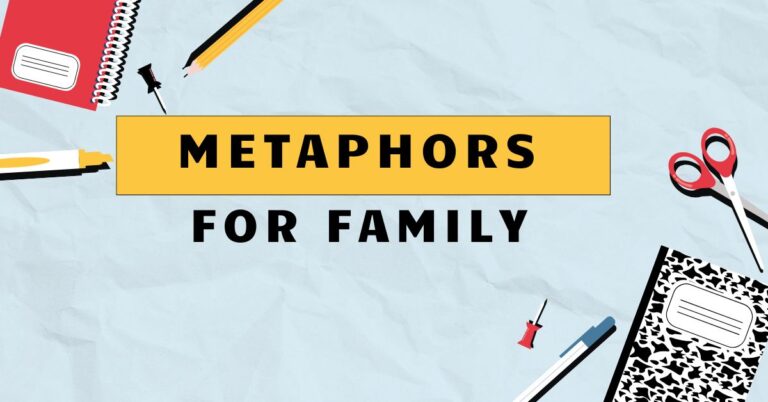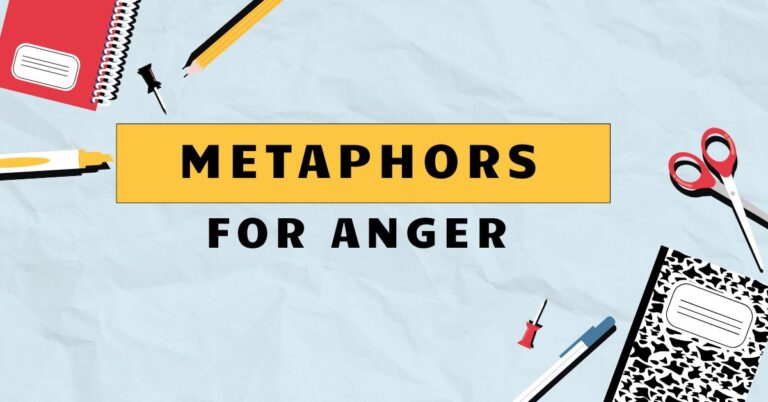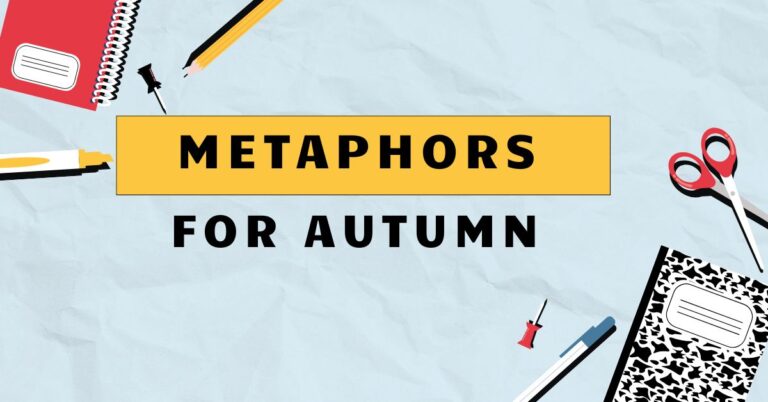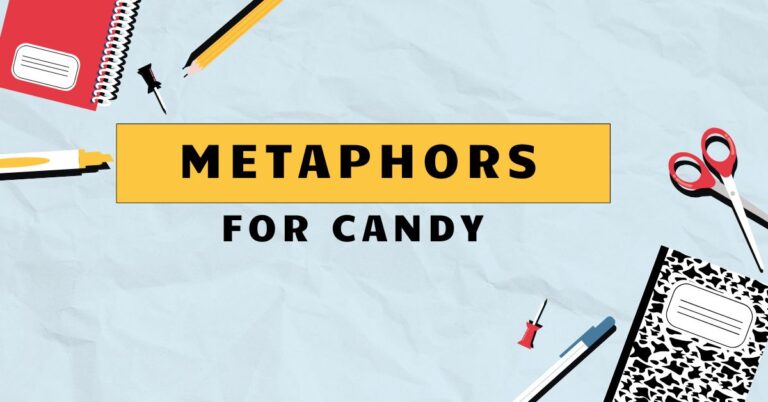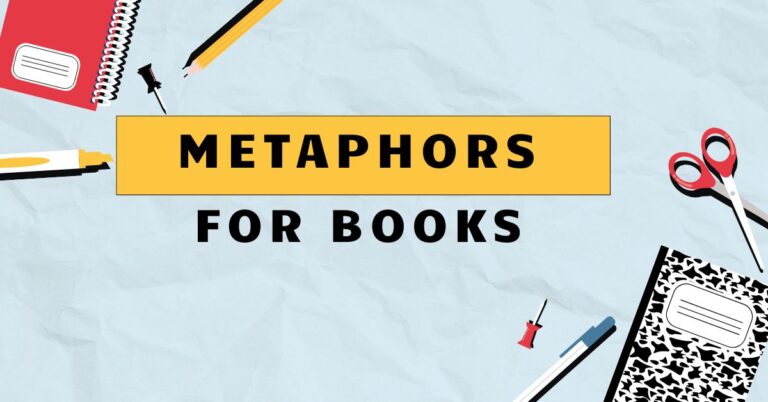39 Time’s Illusions: Mastering Metaphors in English Grammar
Understanding how we use metaphors to conceptualize time is crucial for mastering English grammar and communication. Time, being an abstract concept, is often described using concrete terms and relatable experiences.
This article delves into the various types of time metaphors, their structural elements, and how they shape our understanding and expression of temporal concepts. Whether you’re an ESL learner, a student of linguistics, or simply someone interested in the nuances of language, this guide will provide you with a comprehensive exploration of time metaphors.
Table of Contents
- Introduction
- Definition of Time Metaphors
- Structural Breakdown
- Types and Categories of Time Metaphors
- Examples of Time Metaphors
- Usage Rules
- Common Mistakes
- Practice Exercises
- Advanced Topics
- FAQ
- Conclusion
Introduction
Metaphors are fundamental to how we understand and communicate abstract concepts. Time, being inherently abstract, relies heavily on metaphorical language.
By framing time in terms of more concrete and familiar concepts, we can better grasp its passage, duration, and importance. This article will explore the various ways we use metaphors to talk about time, providing a detailed analysis of their structure, function, and usage.
This understanding is vital for effective communication and nuanced comprehension of English.
This article is designed for English language learners, linguistics enthusiasts, and anyone keen on improving their understanding of figurative language. By the end of this exploration, you will be able to identify, analyze, and effectively use time metaphors in your own speech and writing.
Furthermore, you’ll gain a deeper appreciation for how metaphors shape our perception of the world around us.
Definition of Time Metaphors
Atime metaphoris a figure of speech that describes time in terms of something else, typically a more concrete or easily understandable concept. Metaphors, in general, work by suggesting a similarity between two seemingly unrelated things.
In the context of time, these metaphors help us to conceptualize its abstract nature by associating it with tangible experiences, objects, or ideas.
Time metaphors serve several functions. They provide a framework for understanding time’s passage (e.g.,time flies), its value (e.g.,time is money), and its relationship to events (e.g.,the deadline is approaching).
They also add color and vividness to our language, making our communication more engaging and expressive. The context in which a time metaphor is used can significantly impact its interpretation; therefore, understanding the cultural and linguistic background is crucial.
Structural Breakdown
The structure of a time metaphor typically involves two key components: thetarget domain(time) and thesource domain(the concept used to describe time). The source domain provides a concrete framework for understanding the abstract target domain.
For example, in the metaphor “time is money,” time is the target domain, and money is the source domain. This implies that time can be spent, saved, wasted, and invested, just like money.
Metaphorical language often relies onconceptual mapping, which involves transferring properties and relationships from the source domain to the target domain. This mapping isn’t always complete; certain aspects of the source domain are emphasized while others are ignored.
For instance, while we can “spend” time, we cannot literally deposit it in a bank.
Understanding the underlying structure of time metaphors allows us to deconstruct and analyze their meaning more effectively. It also helps us to appreciate the cognitive processes involved in metaphorical thinking.
By recognizing the source and target domains, and the mappings between them, we can gain a deeper understanding of how metaphors shape our understanding of time.
Types and Categories of Time Metaphors
Time metaphors can be categorized based on the source domain they draw upon. Here are some common categories:
Time is Money
This is perhaps the most prevalent type of time metaphor in Western cultures. It equates time with a valuable commodity that can be spent, saved, wasted, or invested.
This metaphor emphasizes the finite and precious nature of time, encouraging efficiency and productivity.
Time is a Resource
Similar to the “time is money” metaphor, this category views time as a limited resource that needs to be managed carefully. However, it extends beyond monetary value to encompass other aspects of resource management, such as allocation, conservation, and consumption.
Time is a Moving Object
This metaphor portrays time as something that moves, either towards us or away from us. It can be visualized as a river, a vehicle, or any other object in motion.
This helps us understand the passage of time and our relationship to it. Time can be seen as approaching, passing, or receding.
Time is a Place
This metaphor conceptualizes time as a spatial dimension, allowing us to talk about being “in” a particular time period or “going through” a certain phase. It provides a framework for understanding the duration and sequence of events.
Time is a Person
This less common metaphor personifies time, attributing human-like qualities to it. Time can be seen as a healer, a thief, or a judge.
This adds a more emotional and subjective dimension to our understanding of time.
Examples of Time Metaphors
Here are examples of each category of time metaphors, illustrating their diverse applications and nuances.
Time is Money Examples
The following table provides examples of the “Time is Money” metaphor. Note how each sentence uses financial terms to describe or relate to time.
| Example | Explanation |
|---|---|
| I invested a lot of time in this project. | Time is seen as an investment that yields returns. |
| He’s wasting time. | Time is seen as a valuable resource being squandered. |
| Time is running out. | Time is depicted as a limited resource that is being depleted. |
| You’re spending too much time on that. | Time is treated as something that can be expended. |
| I can’t afford to waste any more time. | Time is a valuable resource that is too precious to waste. |
| That saved me a lot of time. | Saving time is like saving money. |
| Time is a valuable asset. | Time is treated as a possession of worth. |
| She’s living on borrowed time. | Time is a loan that must eventually be repaid. |
| I’m on a tight timeline. | Time is a constraint, similar to a budget. |
| Time is of the essence. | Highlights the critical value of time in a situation. |
| He bought some time by delaying the decision. | Time can be acquired or extended. |
| You need to budget your time effectively. | Managing time like a financial budget. |
| I’m paying for it with my time. | Time is the currency being used. |
| Time is a currency. | Time is directly equated to money. |
| You’ll get your money’s worth of time. | You will receive valuable benefits from the time spent. |
| Every minute counts. | Each unit of time is valuable. |
| I’m making the most of my time. | Using time efficiently to gain maximum benefit. |
| Don’t squander your time. | Avoid wasting time. |
| Time is a precious commodity. | Time is a valuable and limited resource. |
| Time is slipping away. | Time is being lost. |
| He’s cashing in on his time. | He is benefiting from the time he has spent. |
| This will cost you time. | This task will require a significant time investment. |
| I’m time-poor. | I do not have enough time. |
Time is a Resource Examples
The following table provides examples of the “Time is a Resource” metaphor, focusing on how time is managed and utilized.
| Example | Explanation |
|---|---|
| We need to allocate our time more efficiently. | Time is a resource that needs to be distributed wisely. |
| I’m running low on time. | Time is a limited resource that is being depleted. |
| We need to conserve our time. | Time should be used sparingly and carefully. |
| Time is a finite resource. | Time has a definite limit. |
| We’ve exhausted our time. | All available time has been used up. |
| Time is a limited supply. | Time is available in restricted quantities. |
| Manage your time effectively. | Use time in a well-organized manner. |
| Time is being consumed rapidly. | Time is being used up quickly. |
| We need to optimize our time usage. | Make the best possible use of available time. |
| I’m rationing my time. | Carefully controlling the use of time. |
| Time is a valuable commodity to be utilized wisely. | Time is a resource that should be used efficiently. |
| We must harness our time effectively. | Use time to its maximum potential. |
| Time is a raw material for productivity. | Time is an essential input for achieving results. |
| We need to tap into our available time. | Access and use the time we have. |
| Time is being depleted by these distractions. | Time is being reduced due to interruptions. |
| I need to replenish my time reserves. | Find ways to free up more time. |
| Time is a strategic resource. | Time is a critical asset for achieving goals. |
| We’re depleting our time at an alarming rate. | Time is being used up very quickly. |
| Time is an essential element in this project. | Time is a key component. |
| We need to budget our time carefully. | Plan and allocate time wisely. |
| I’m running out of time. | Having very little time remaining. |
| Time is short. | Little time is available. |
| We must conserve time. | Save and use time effectively. |
Time is a Moving Object Examples
The following table provides examples of the “Time is a Moving Object” metaphor, illustrating how time is perceived as moving towards or away from us.
| Example | Explanation |
|---|---|
| The deadline is approaching. | The deadline is moving closer in time. |
| Time is flying by. | Time is passing quickly. |
| The years have rolled by. | Years have passed smoothly and continuously. |
| The future is rushing towards us. | The future is coming quickly. |
| Time marches on. | Time continues inexorably. |
| The clock is ticking. | Time is passing, often with a sense of urgency. |
| Time is slipping away. | Time is being lost. |
| The days are dragging on. | Time is passing slowly and tediously. |
| The past is receding into the distance. | The past is moving further away in time. |
| Time waits for no one. | Time continues regardless of human actions. |
| The moment has passed. | That particular time is now gone. |
| Time is drawing near. | An event is approaching. |
| The deadline looms. | The deadline is getting closer and is causing concern. |
| Time is creeping by. | Time is passing very slowly. |
| The hour is upon us. | The anticipated time has arrived. |
| Time is on our side. | We have sufficient time to achieve our goals. |
| The sands of time are running out. | Time is running out. |
| Time is against us. | We do not have enough time. |
| The years are slipping through my fingers. | Time is passing quickly and uncontrollably. |
| Time sped by. | Time passed very quickly. |
| The future beckons. | The future is inviting and promising. |
| Time gallops on. | Time moves very fast. |
| The past haunts us. | The past continues to affect us. |
Time is a Place Examples
The following table provides examples of the “Time is a Place” metaphor, illustrating how time is conceptualized as a spatial dimension.
| Example | Explanation |
|---|---|
| We’re in a difficult time. | Time is treated as a location where we currently exist. |
| I’m going through a phase. | Time is a space that one traverses. |
| We’re entering a new era. | Time is a region that we are moving into. |
| He’s stuck in the past. | Time is a location from which he cannot escape. |
| We’re approaching the end of the year. | Time is a journey towards a specific destination. |
| She’s living in the moment. | Time is a place where she is currently situated. |
| We’re heading into the future. | Time is a direction we are moving towards. |
| They’re lost in time. | Time is an environment where they are disoriented. |
| We’re at a crossroads in time. | Time is a point where decisions must be made. |
| This happened in ancient times. | Time is a historical location. |
| We are in the age of technology. | Time is a defined period with specific characteristics. |
| I find myself in a period of transition. | Time is a state of change. |
| We are navigating through uncharted waters. | Time is an unexplored area. |
| I’m between appointments. | A period of time separating events. |
| The event is in the near future. | A location in time that is close. |
| We are in a new chapter. | Time is a new section in a story. |
| We are in uncharted territory. | Time is an undiscovered area. |
| The project is in its early stages. | Time is a phase of development. |
| We’re passing through a difficult period. | Time is a place we are moving through. |
| I’m in a hurry. | Being in a state of urgency. |
Time is a Person Examples
The following table provides examples of the “Time is a Person” metaphor, illustrating how time can be personified with human-like attributes.
| Example | Explanation |
|---|---|
| Time heals all wounds. | Time is a healer that can mend emotional pain. |
| Time is a great teacher. | Time is a mentor that provides valuable lessons. |
| Time will tell. | Time is a revealer that will uncover the truth. |
| Time is a thief. | Time is a robber that steals our youth and opportunities. |
| Father Time. | Time is an old, wise figure. |
| Time is the ultimate judge. | Time is a decider of fates and outcomes. |
| Time has a way of catching up. | Time is an entity that eventually confronts us with consequences. |
| Time favors the prepared. | Time is a benefactor to those who are ready. |
| Time is a cruel master. | Time is a harsh taskmaster demanding obedience. |
| Time reveals all. | Time is a source of truth and clarity. |
| Time waits for no man. | Time is an impartial entity that does not pause for anyone. |
| Time has its own agenda. | Time is a force with its own plans and purposes. |
| Time is a silent observer. | Time is a witness to events without intervention. |
| Time is a relentless pursuer. | Time is an unstoppable force that chases after us. |
| Time is a demanding companion. | Time requires constant attention and management. |
| Time is patient. | Time can wait for the right moment. |
| Time is unforgiving. | Time does not excuse mistakes. |
| Time is wise. | Time offers valuable insights. |
Usage Rules
While time metaphors can enrich our language, it’s essential to use them appropriately. Consider the context and audience when choosing a metaphor.
Overusing metaphors can make your language sound cliché or confusing. Strive for a balance between vividness and clarity.
Be aware of the cultural implications of different time metaphors. For example, the “time is money” metaphor is deeply ingrained in Western cultures but may not resonate as strongly in other parts of the world.
Using culturally inappropriate metaphors can lead to misunderstandings or offense.
Ensure that the metaphor you choose aligns with the message you’re trying to convey. A poorly chosen metaphor can undermine your credibility and obscure your meaning.
Always consider the connotations and implications of the source domain before applying it to time. For instance, using “time is a prison” might be appropriate if discussing a monotonous routine, but unsuitable for generally describing life.
Common Mistakes
One common mistake is mixing metaphors, which can create confusing and nonsensical statements. For example, saying “Time is money, and it’s also running away from us” combines two different metaphors in a way that doesn’t make logical sense.
Another mistake is using clichés without considering their impact. Overused metaphors like “time flies” can lose their impact and make your language sound unoriginal.
Try to find fresh and creative ways to express your ideas.
Finally, be careful not to take metaphors too literally. Remember that they are figures of speech, not literal truths.
Avoid drawing conclusions that are inconsistent with reality. For example, just because “time is money” doesn’t mean you can literally exchange time for goods or services.
Here are some examples of common mistakes and corrections:
| Incorrect | Correct | Explanation |
|---|---|---|
| Time is money, but it’s also a river flowing uphill. | Time is money, so we should invest it wisely. | Mixing metaphors creates confusion. |
| Time flies when you’re having fun, like a speeding bullet. | Time flies when you’re having fun. | Avoid adding unnecessary or contradictory imagery to clichés. |
| Since time is money, I can pay my rent with hours of work. | Time is money, so I need to manage my work hours effectively to earn enough to pay my rent. | Do not take metaphors too literally. |
Practice Exercises
Test your understanding of time metaphors with these exercises.
Exercise 1: Identifying Time Metaphors
Identify the time metaphor used in each sentence and explain its meaning.
| Question | Answer |
|---|---|
| 1. He invested a lot of time in learning the language. | Time is Money: Time is seen as an investment. |
| 2. The deadline is rapidly approaching. | Time is a Moving Object: The deadline is moving closer. |
| 3. We are in a period of great change. | Time is a Place: Time is a location where we currently exist. |
| 4. Time heals all wounds. | Time is a Person: Time is a healer. |
| 5. I can’t afford to waste any more time. | Time is Money: Time is a valuable resource. |
| 6. Time is slipping through my fingers. | Time is a Moving Object: Time is being lost uncontrollably. |
| 7. We are entering a new era. | Time is a Place: Time is a region we are moving into. |
| 8. Time is a thief. | Time is a Person: Time steals our youth. |
| 9. We need to allocate our time more efficiently. | Time is a Resource: Time needs to be distributed wisely. |
| 10. The future is rushing towards us. | Time is a Moving Object: The future is coming quickly. |
Exercise 2: Using Time Metaphors
Complete each sentence with an appropriate time metaphor.
| Question | Answer |
|---|---|
| 1. Since ____________, we need to start working harder. | Time is running out |
| 2. I’m ____________ trying to finish this project. | Investing a lot of time |
| 3. ____________, so be sure to make the most of it. | Time is a valuable resource |
| 4. As ____________, we need to be prepared for anything. | The deadline approaches |
| 5. ____________, and we should learn from our mistakes. | Time is a great teacher |
| 6. The project is ____________, so we must be patient. | In its early stages |
| 7. ____________, and we should embrace the possibilities. | The future beckons |
| 8. ____________, but we can’t change the past. | Time is unforgiving |
| 9. We need to ____________ to achieve our goals. | Manage our time effectively |
| 10. The past is ____________, so we should focus on the present. | Receding into the distance |
Advanced Topics
For advanced learners, it’s beneficial to explore the cultural variations in time metaphors. Different cultures may conceptualize time in fundamentally different ways, leading to the use of unique metaphors.
For example, some cultures view time as cyclical rather than linear, which is reflected in their language.
Another advanced topic is the relationship between time metaphors and cognitive linguistics. Cognitive linguistics explores how our understanding of language is shaped by our embodied experiences and cognitive processes.
Time metaphors provide valuable insights into how we conceptualize abstract concepts through concrete experiences.
Finally, consider the role of time metaphors in literature and rhetoric. Authors and speakers often use time metaphors to create vivid imagery, evoke emotions, and persuade their audience.
Analyzing the use of time metaphors in different texts can enhance your understanding of literary and rhetorical techniques.
FAQ
- What is the difference between a metaphor and a simile?
A metaphor implies a resemblance between two things by stating that one thing *is* another, whereas a simile explicitly compares two things using words like “like” or “as.” For example, “time is money” is a metaphor, while “time flies like an arrow” is a simile.
- Why are time metaphors so common in English?
Time is an abstract concept, and metaphors provide a concrete way to understand and communicate about it. English speakers, like speakers of many languages, rely on metaphors to make sense of abstract ideas.
- Are time metaphors universal across all languages?
No, while some time metaphors are common across many languages, others are culturally specific. The way a culture perceives time influences the metaphors they use to describe it. Some languages may not have a direct equivalent for the “time is money” metaphor, for example.
- How can I improve my use of time metaphors?
Pay attention to how native English speakers use time metaphors in their speech and writing. Read widely and notice the different ways time is described. Practice using time metaphors in your own communication, and ask for feedback from others.
- What are some common alternatives to using time metaphors?
Instead of using metaphors, you can use literal language to describe time. For example, instead of saying “time is running out,” you could say “we have limited time remaining.” However, metaphors often add more vividness and impact to your communication.
- How do time metaphors influence our perception of time?
Time metaphors can shape our attitudes and behaviors related to time. For example, the “time is money” metaphor can lead us to prioritize efficiency and productivity, while the “time heals all wounds” metaphor can offer comfort and hope during difficult times.
- Can the overuse of time metaphors be a problem?
Yes, overusing time metaphors can make your language sound cliché and unoriginal. It’s important to use metaphors judiciously and to find fresh and creative ways to express your ideas.
- How can I identify a time metaphor in a sentence?
Look for language that describes time in terms of something else, such as money, movement, or a person. If the sentence uses figurative language to describe time, it’s likely a time metaphor.
- Are there any negative connotations associated with certain time metaphors?
Yes, some time metaphors can have negative connotations. For example, “time is a thief” suggests that time is something that steals our youth and opportunities. Be mindful of the emotional impact of the metaphors you choose.
- How do time metaphors relate to the concept of time management?
Time metaphors, particularly “time is money” and “time is a resource,” directly influence how we approach time management. They encourage us to treat time as a valuable asset that needs to be carefully planned, allocated, and utilized efficiently.
Conclusion
Time metaphors are a powerful tool for understanding and communicating about the abstract concept of time. By recognizing the different types of time metaphors, their structural elements, and their cultural implications, you can enhance your understanding of English grammar and improve your communication skills.
Remember to use metaphors judiciously and to consider the context and audience when choosing a metaphor.
Continue to explore the world of figurative language and pay attention to the metaphors used by native English speakers. With practice and awareness, you can master the art of using time metaphors effectively and expressively.
Embracing the nuances of metaphorical language will not only enhance your linguistic abilities but also deepen your appreciation for the richness and complexity of human communication.

